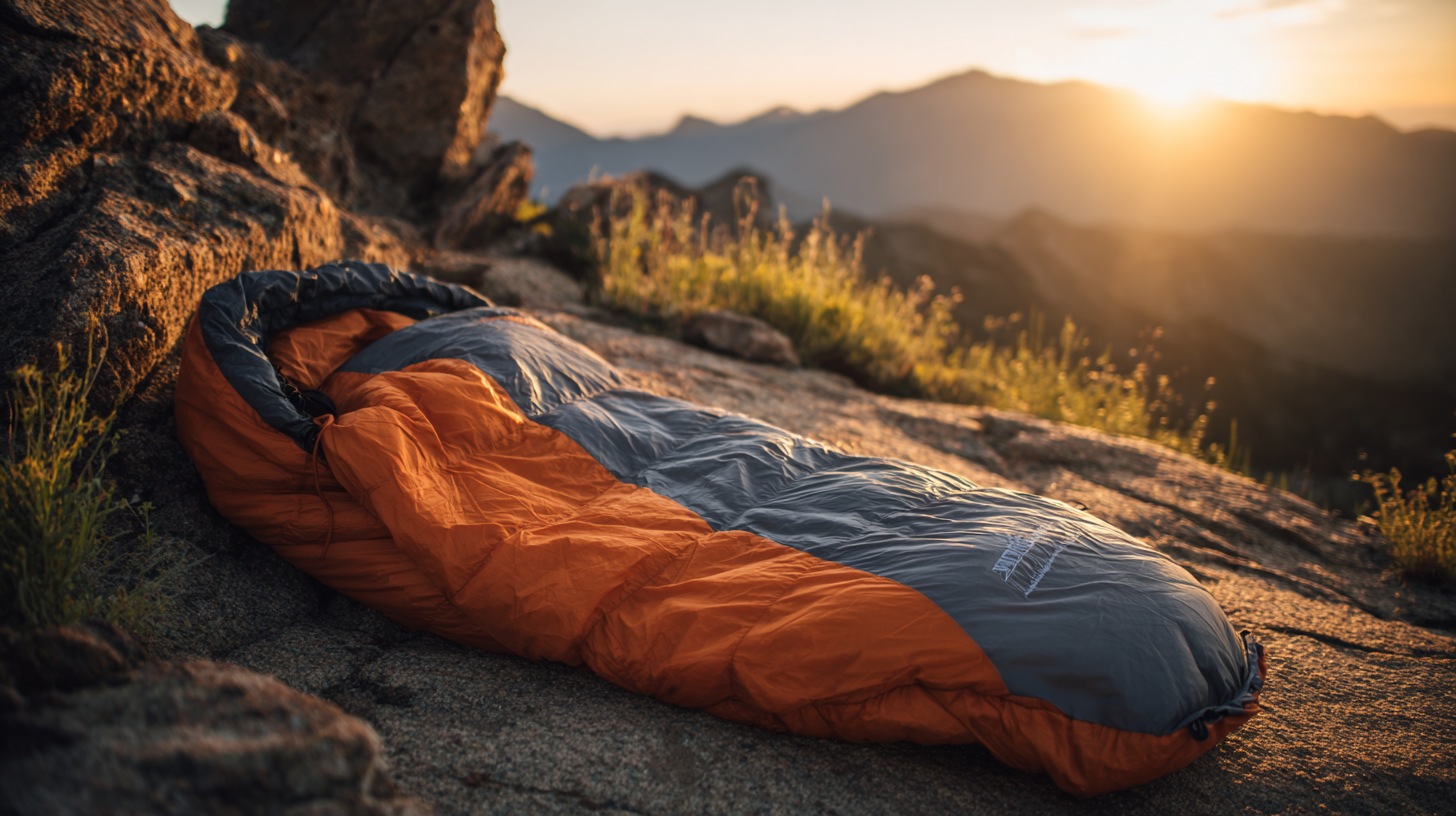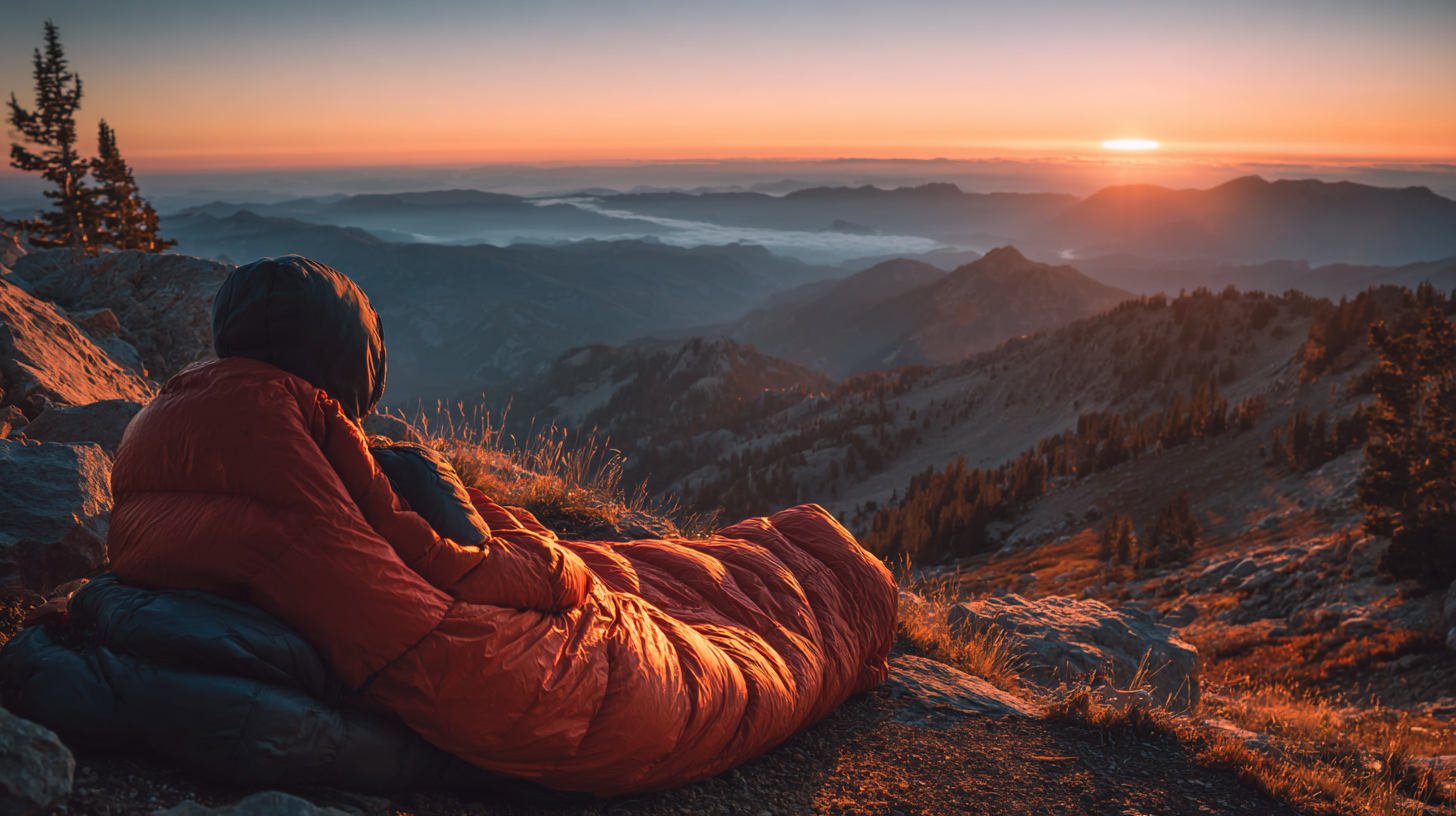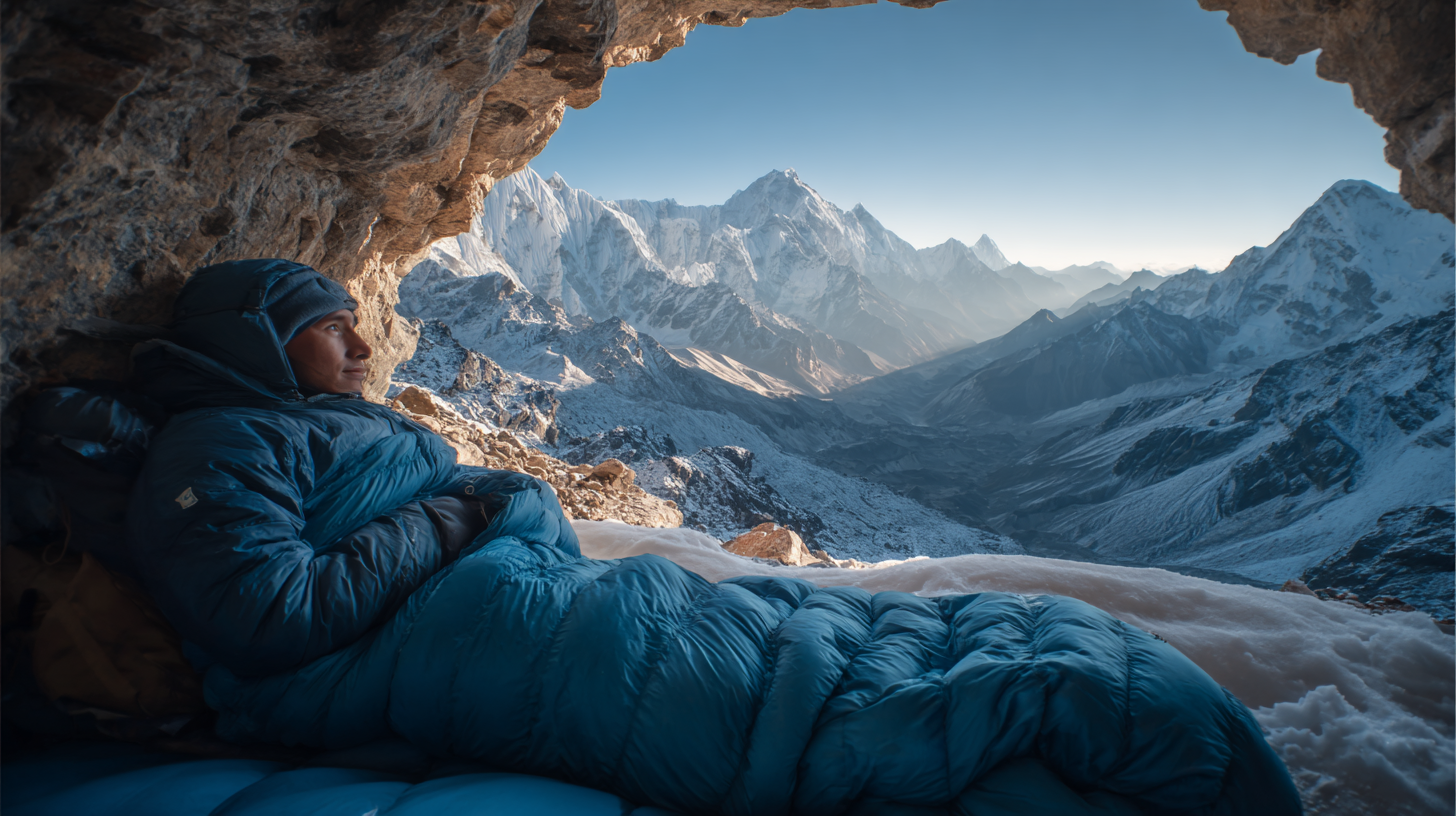Leave Your Message
- E-mail
- Whatsapp
When it comes to outdoor adventures and camping trips, the importance of selecting the right good sleeping bags cannot be overstated. According to a recent report by the Outdoor Industry Association, over 47 million Americans participate in camping each year, and the demand for high-quality sleeping gear continues to rise. Additionally, a survey by REI found that nearly 85% of campers consider a good sleeping bag essential for a comfortable night's sleep in the wilderness. Factors such as insulation type, temperature ratings, and packability play a crucial role in ensuring a restful experience under the stars. With an ever-expanding market, choosing the right good sleeping bags can be overwhelming; however, this guide aims to provide expert insights and data-driven tips to aid in making an informed decision. Let’s dive into the key elements that contribute to an ideal sleeping bag experience, ensuring your outdoor escapades are both enjoyable and restful.

When selecting a quality sleeping bag, it's essential to focus on the key features that enhance your comfort and safety during outdoor adventures. First and foremost, insulation type plays a critical role in warmth retention. Down insulation offers superior warmth-to-weight ratios, making it a popular choice for campers seeking lightweight options. However, synthetic insulation is often more affordable and maintains insulation properties when wet, which is vital for unpredictable weather conditions.

Another important aspect is the sleeping bag's temperature rating. Choosing a bag suited to the lowest temperatures you expect to encounter ensures a comfortable night’s sleep. Additionally, consider the bag's shape: mummy bags are designed to hug the body for maximum warmth, while rectangular bags provide more room to move. Lastly, features like draft collars and zipper baffles can greatly improve heat retention, preventing cold air from seeping inside. By paying attention to these essential features, you'll not only make a more informed choice but also enhance your overall camping experience.
Choosing the right sleeping bag can significantly impact the quality of your outdoor experience, and understanding temperature ratings is crucial in making the right selection. Sleeping bags come with a specific temperature rating, which indicates the lowest temperature at which they can keep an average person warm. It is essential to consider how these ratings are determined, as they reflect the insulation properties, the bag's shape, and construction materials. Most manufacturers test their sleeping bags in controlled environments, but personal factors such as metabolism, clothing insulation, and sleep position can affect comfort levels.
When selecting a sleeping bag, take into account the climate and conditions of your trips. If you plan to hike or camp in cooler environments, opt for a sleeping bag with a lower temperature rating to ensure warmth. Conversely, for milder weather, a bag with a higher temperature rating would suffice. It is also wise to look for bags with features like draft collars, zippers, and adjustable hoods, which can add versatility and warmth. Ultimately, the right sleeping bag will balance the temperature rating with your comfort needs, ensuring a restful night's sleep under the stars.
When it comes to choosing the perfect sleeping bag for your outdoor adventures, understanding the difference between down and synthetic materials is crucial. Down sleeping bags are known for their exceptional warmth-to-weight ratio, making them ideal for backpackers looking to minimize pack weight while maximizing insulation. However, they do require careful handling and can be less effective when wet.
 On the other hand, synthetic sleeping bags offer excellent moisture resistance and are easier to clean, making them a great choice for wet weather conditions or less than meticulous campers.
On the other hand, synthetic sleeping bags offer excellent moisture resistance and are easier to clean, making them a great choice for wet weather conditions or less than meticulous campers.
Here are some tips to consider when selecting between down and synthetic sleeping bags: First, assess your typical camping conditions. If you frequently camp in damp environments, a synthetic bag may be your best bet due to its resilience against moisture. Additionally, consider the temperature ratings of each bag. Down bags tend to have a higher warmth rating at a lower weight, so for cold weather excursions, down might be more suitable. Lastly, think about your budget; down bags can be significantly more expensive than their synthetic counterparts, so weigh your needs against your financial limits.
Ultimately, the choice between down and synthetic sleeping bags comes down to personal preference and the specific conditions of your adventures. By understanding the advantages and disadvantages of each material, you can make a more informed decision that enhances your outdoor experience.
When searching for the ideal sleeping bag, size and shape should be your primary considerations for achieving a comfortable night’s sleep. A sleeping bag that fits your body snugly will help retain heat and provide better insulation. For instance, smaller or tapered shapes can be perfect for those who prefer a streamlined fit, while rectangular bags offer more room to move, catering to those who need extra space or enjoy sleeping in various positions.
Tip 1: Measure your height and consider your sleeping style when selecting a sleeping bag. If you’re a side sleeper, a more spacious design may benefit you, while back sleepers might prefer a form-fitting option.
Tip 2: Don’t overlook the bag’s length and width specifications. Some brands have specific measurements for different sizes, ensuring that you find the perfect fit for your frame—whether you’re petite or taller.
Tip 3: Lastly, be mindful of the seasonality of sleeping bags. Different shapes and materials offer varying insulative properties. Opt for a bag suitable for the climate you will be in, ensuring a cozy and restful night under the stars.
When it comes to selecting the perfect sleeping bag, balancing cost and performance is crucial. An inexpensive option might seem appealing, but sacrificing quality can lead to discomfort during your outdoor adventures. Investing in a sleeping bag made from high-quality materials can significantly enhance your experience, keeping you warm and dry in various conditions. It’s essential to evaluate the features that matter most to you, such as insulation type, weight, and weather resistance, and find a model that meets both your needs and your budget.
To make the best choice without breaking the bank, consider setting a clear budget before you begin your search. Look for seasonal sales, bundle offers, or second-hand opportunities that can allow you to procure high-quality sleeping bags at reduced prices. Additionally, read expert reviews and gather insights on performance metrics, as this data-driven approach can guide you toward options that deliver the best value for your money. By prioritizing quality while remaining price-conscious, you can enjoy restful nights under the stars without the worry of overspending.
